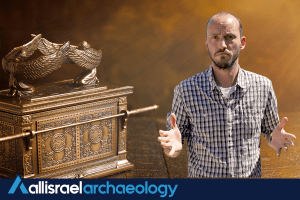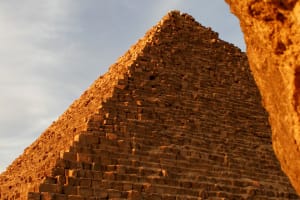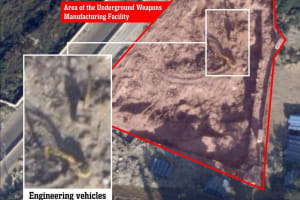Could Susya be a 1600-year-old Messianic Jewish city?
Some argue it was inhabited by early Christians who maintained Jewish identity

Susya, a historical Jewish city nestled in the southern Judea region during the Roman-Byzantine era, offers a glimpse into a rich tapestry of religious and communal life dating back to the 3rd to 5th centuries A.D.
This ancient settlement, now an archaeological site, bears witness to a bygone era, echoing stories of faith and cultural significance that resonate through time. This site could be the witness of one of the first historical Jewish-Christian (Nazorean) communities ever.
Located on three hills in a horseshoe shape, spanning approximately 300-400 dunams, Susya stands as a testament to a vibrant past. At its heart lies a synagogue, one of the most expansive and grandiose in the region. Its mosaic-adorned floors, embellished with Hebrew and Aramaic inscriptions, speak volumes about the community that once thrived within its walls. The discovery of parts of a marble prayer podium further enhances the site's allure, offering a glimpse into ancient Jewish religious practices. The podium is displayed at the Israel Museum in Jerusalem today.
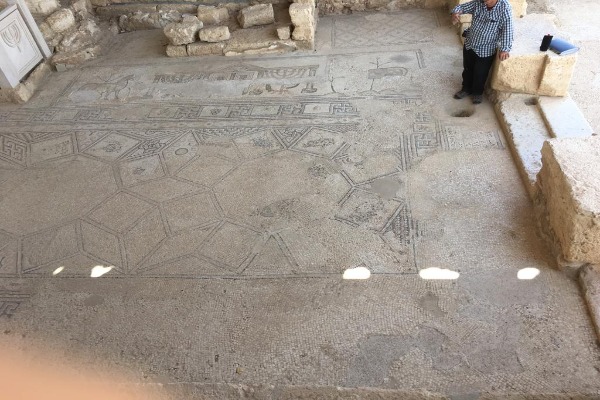
The first origins of Susya trace back to two farmhouses existing towards the end of the Second Temple period (2nd and 1st century B.C. to 1st century A.D.) Archaeological findings, including coins dating from various historical periods, shed light on the city's evolution over time. It was during the Byzantine period that Susya began to flourish but it reached its peak, evidenced by ceramic artifacts during the early Muslim period. The settlement was abandoned in the 8th century but resettled from the 9th to 14th centuries, this time primarily as a Muslim city.
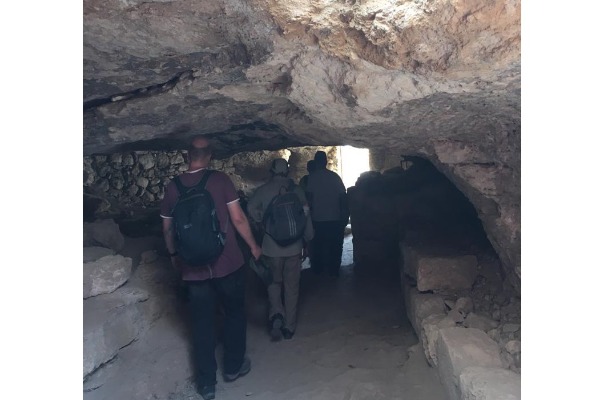
From the early 9th century, there is no evidence of Jewish presence in the area. According to Yuval Baruch, an Israeli archaeologist, it appears that the Jewish inhabitants either converted to Islam or left the place, and a mosque was built in the synagogue courtyard. Some later "iconoclasm" signs have been identified by archaeologists on the synagogue mosaic's figurative designs, possibly a remnant of the conversion of the building into a mosque later on.
The ancient city includes around 70 tunnels and caves or underground ancient dwelling areas, ostly used in antiquity as shelters to hide from the summer heat of the middle of the day.
Notably, Susya's history intertwines with the complex tapestry of religious identity. Baruch's excavations unearthed approximately 30 mikvaot, Jewish ritual baths, integrated with residential structures. These findings suggest a significant presence of Jewish priests living here during antiquity, likely arriving after the destruction of the Second Temple in 70 A.D. The inscription found in the synagogue courtyard, mentioning priests Issi and Yochanan, further corroborates this hypothesis.
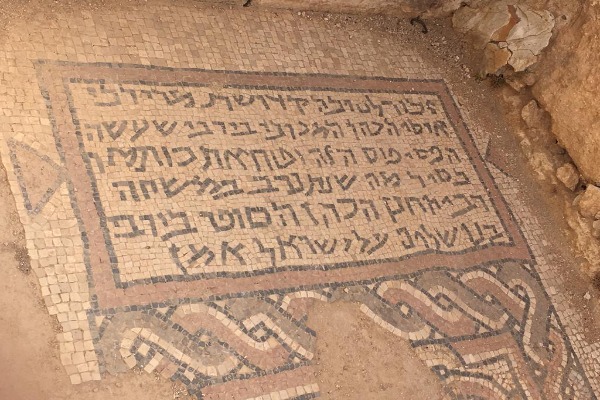
This place served as a domain for "Cohanim" (priests), boasting numerous Jewish ritual baths.
According to ancient Jewish sources, synagogues are typically constructed on elevated terrain, resembling temples dedicated to God, though exceptions exist, and there are even lowered synagogues, and this is because of other specific reasons. The site features a “fortified” synagogue – a rarity – complete with a rolling stones mechanism to seal its main entrances, alongside an escape tunnel.
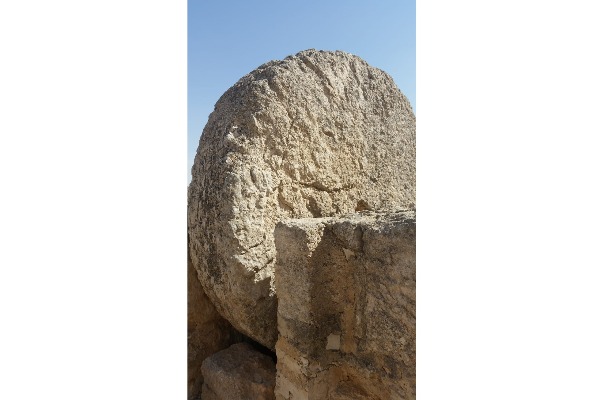
The synagogue also boasts mosaic inscriptions in Hebrew or Aramaic, rather than Greek, which is unusual for the Byzantine period. Hebrew and Aramaic are rare in synagogue inscriptions of the Byzantine period, while Greek was predominant.
The intricate mosaic within the synagogue features depictions of the Menorah (7 branches candelabrum), a shofar (ram's horn), a zodiac wheel, and biblical motifs like Daniel in the lion's den, the binding of Isaac, and more. Positioned within the synagogue is a "beema" (prayer pulpit) oriented towards the north and Jerusalem, while the entrance faces east, reminiscent of the Temple.
Despite the presence of priests at Susya during this period, Susya is absent from both Jewish and Christian written sources, including the Talmud and the Onomasticon of Eusebius. Surrounding Susya are other ancient Jewish towns like Maon, Zeif and Eshtemoa, which are all well-documented in ancient literature.
Susya's absence from written sources raises questions about why this site has been overlooked in ancient documents. Perhaps the answer lies in the small mosaic situated on the right side upon entering the synagogue courtyard, a detail that has strangely received minimal attention from researchers.
The inscription on the mosaic is in Aramaic and reads: "Remember (them) for good, advocate (or the comforter) Yeshua (Jesus) witness (or martyr) and advocate (or the comforter) that (or "sh…")."

Because of this inscription, some writers and researchers today argue that this town was inhabited by Messianic believers, early Christians who maintained their Jewish ethnic identity, living alongside the Byzantine Jews and Christians in other cities. Others are more cautious and are claiming that this is only one possibility.
The assertion that early Christians lived in Susya is primarily based on the hidden nature of the “secret mosaic inscription” mentioned above, which can be interpreted as a prayer referencing “Yeshua” (Jesus) and the Holy Spirit ("The Comforter"). In addition, the secluded and closed-off community lifestyle of Susya's residents during the Byzantine period lends credence to this theory. It is plausible that this isolation contributed to the scant mentions of Susya in historical sources and the fortress-like appearance of the synagogue, possibly indicating a need for protection from external threats.
The cause for the lack of mentions of this city in ancient sources may also be a systematic boycott against it by both Jewish and Christian neighbors' populations and authorities. Could it be because they were ethnically Jews but believed in Jesus' Gospel?
On the other hand, the name "Yeshua" was a very common name during the 1st century A.D., and probably after it during the Byzantine period. The "Yeshua" mentioned in the mysterious mosaic might represent another individual named Jesus who aided in the construction of the synagogue, with his name included there as a memorial dedication.
However, other mosaic inscriptions within the synagogue feature terminology and words akin to those found in ancient nearby Byzantine churches of the period, rather than typical synagogue inscriptions.
The floor designs of the mosaics bear a striking resemblance to those found in churches, like the one discovered at Beit-Guvrin. Do these similarities serve as additional clues to the true religious identity of the so-called synagogue of Susya?

It is conceivable that this community, if it was Messianic Jewish similar to other early Jewish Christian (Nazorean) communities, faded into obscurity during antiquity, assimilating into the mainstream Roman church of both the Eastern and Western branches or maybe into Islam during the 7th to 9th centuries A.D. If the idea of Susya being a Messianic Jewish community during antiquity is accurate, it wasn’t probably the only such community in the Holy Land. Specific archaeological pieces of evidence and key historical facts may suggest that the first church of Jewish followers of Jesus was situated on Mount Zion in Jerusalem, although this topic warrants a separate and thorough exploration.
The theory that Susya was a Messianic Jewish ancient city remains a mystery and carries a major question mark. Only new excavations could definitively prove if the mysterious inscriptions mention Jesus of Nazareth or another man named Jesus from the Byzantine period.
[Editor's note: Other current qualitative documentation and research material about the possibility of Susya being an ancient Messianic Jewish village are available on the internet. The YouTube channel of Sergio and Rhoda in Israel [video embedded above] provides valuable insights into this matter.]

Aaron Goel-Angot is a Belgian-Israeli archaeologist with an expertise in antiquities identification. He is an enthusiastic numismatist and a licensed tour guide. He holds a BA degree in archaeology from the Institute of Archaeology at the Hebrew University of Jerusalem. He joined the ALL ISRAEL NEWS team as an Archaeology and Tourism correspondent. Aaron is married, father of three young children and lives in Jerusalem.
You might also like to read this:




